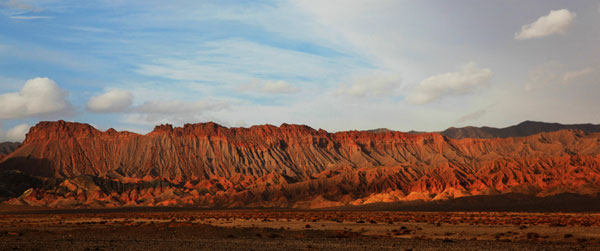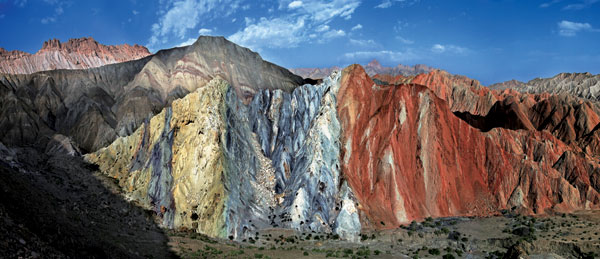


(Photo/haixi.gov.cn)
"Mars Village," China's first simulated Mars base, will be built in Haixi Mongolian and Tibetan autonomous Prefecture, NW China's Qinghai province, China News Service reported on July 25.
Located in the hinterland of the Qinghai-Tibetan Plateau, the prefecture has diverse geography and magnificent natural scenery, including mountains, grasslands, desert, rivers, and lakes. The main part of the region is the Qaidam Basin, which enjoys the reputation of "Cornucopia."

(Photo/haixi.gov.cn)
Desertification covers an area of 95,000 square kilometers, accounting for 75.6 percent of the total desert area in Qinghai province. The Gobi Desert is home to China's largest Yadan landform. The geographical features, natural scenery, and climate are all similar to that of on Mars, making the region a good area for the construction of a simulated base.
Liu Xiaoqun, director of the General Office of the Lunar and Deep-Space Exploration at the Chinese Academy of Sciences, said that China's Mars Village will boost local tourism and cultural industries. The project is located in the Qinghai-Tibet Plateau region, which neighbors the historical Hexi Corridor. As the only Mars-themed tourism spot in China, it will serve as an important educational base for the fields of aerospace, astronomy, geography, geology, meteorology, and new energy.
China's Mars Village project aims to build a creative Mars experience based on "science, science fiction, nature, ecology, and culture." The main part of the attraction will consist of two functional zones. One being "Mars communities" and the other being "Mars camps."
 Fire brigade in Shanghai holds group wedding
Fire brigade in Shanghai holds group wedding Tourists enjoy ice sculptures in Datan Town, north China
Tourists enjoy ice sculptures in Datan Town, north China Sunset scenery of Dayan Pagoda in Xi'an
Sunset scenery of Dayan Pagoda in Xi'an Tourists have fun at scenic spot in Nanlong Town, NW China
Tourists have fun at scenic spot in Nanlong Town, NW China Harbin attracts tourists by making best use of ice in winter
Harbin attracts tourists by making best use of ice in winter In pics: FIS Alpine Ski Women's World Cup Slalom
In pics: FIS Alpine Ski Women's World Cup Slalom Black-necked cranes rest at reservoir in Lhunzhub County, Lhasa
Black-necked cranes rest at reservoir in Lhunzhub County, Lhasa China's FAST telescope will be available to foreign scientists in April
China's FAST telescope will be available to foreign scientists in April "She power" plays indispensable role in poverty alleviation
"She power" plays indispensable role in poverty alleviation Top 10 world news events of People's Daily in 2020
Top 10 world news events of People's Daily in 2020 Top 10 China news events of People's Daily in 2020
Top 10 China news events of People's Daily in 2020 Top 10 media buzzwords of 2020
Top 10 media buzzwords of 2020 Year-ender:10 major tourism stories of 2020
Year-ender:10 major tourism stories of 2020 No interference in Venezuelan issues
No interference in Venezuelan issues
 Biz prepares for trade spat
Biz prepares for trade spat
 Broadcasting Continent
Broadcasting Continent Australia wins Chinese CEOs as US loses
Australia wins Chinese CEOs as US loses